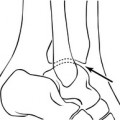Chapter 5 Urinary tract
Methods of imaging the urinary tract
Akin O., Hricak H. Imaging of prostate cancer. Radiol. Clin. North Am.. 2007;45(1):207-222.
Zhang J., Gerst S., Lefkowitz R.A., et al. Imaging of bladder cancer. Radiol. Clin. North Am.. 2007;45(1):183-205.
Zhang J., Lefkowitz R.A., Bach A. Imaging of kidney cancer. Radiol. Clin. North Am.. 2007;45(1):119-147.
Excretion Urography
Also known as intravenous urography (IVU). The technique is much less frequently used than in the past, being largely replaced by CT, MRI or US.
Contraindications
See Chapter 2 – general contraindications to intravenous (i.v.) water-soluble contrast media and ionizing radiation. Pre-medication with steroids (see Chapter 2) may be considered but information regarding the renal size, presence of calcification and pelvicalyceal systems may be gained by using a combination of plain film, US, unenhanced CT and MRI.
Patient preparation
Preliminary film
If necessary, the position of overlying opacities may be further determined by:
Films
ULTRASOUND OF THE URINARY TRACT IN ADULTS
Technique
ULTRASOUND OF THE URINARY TRACT IN CHILDREN
Indications (after Lebowitz, 1985)1
Patient preparation
Full bladder. Patients with an indwelling catheter should have this clamped 1 h before the examination is scheduled.
Technique
Computed Tomography of the Urinary Tract
Indications
Technique
CT urogram
Kluner C., Hein P.A., Gralla O., et al. Does ultra-low-dose CT with a radiation dose equivalent to that of KUB suffice to detect renal and ureteral calculi? J. Comput. Assist. Tomogr.. 2006;30(1):44-50.
Van Der Molen A.J., Cowan N.C., Mueller-Lisse U.G., et alCT Urography Working Group of the European Society of Urogenital Radiology (ESUR). CT urography: definition, indications and techniques. A guideline for clinical practice. Eur. Radiol.. 2008;18(1):4-17.
Magnetic Resonance Imaging of the Urinary Tract
Technique
Technique will be tailored to the clinical question with MR urography used to investigate the renal tract as a whole. MRI of the abdomen and pelvis can be obtained to assess retroperitoneal adenopathy as part of the staging investigations for patients with bladder and prostate cancer, but CT is often used for this purpose with MRI used for local staging.
MAGNETIC RESONANCE UROGRAPHY
The two most common MR urographic techniques are:
Indications
Technique
Leyendecker J.R., Barnes C.E., Zagoria R.J. MR urography: techniques and clinical applications. Radiographics. 2008;28(1):23-46. discussion 4647
Nikken J.J., Krestin G.P. MRI of the kidney – state of the art. Eur. Radiol.. 2007;17(11):2780-2793.
Takahashi N., Kawashima A., Glockner J.F., et al. Small (<2-cm) upper-tract urothelial carcinoma: evaluation with gadolinium-enhanced three-dimensional spoiled gradient-recalled echo MR urography. Radiology. 2008;247(2):451-457.







